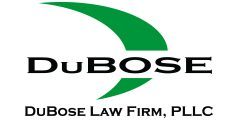The USS Yorktown (CV-5) was ordered for the U.S. Navy on August 3, 1933. Her keel was laid down at Newport News Shipbuilding and Dry Dock Company on May 21, 1934. She was launched on April 4, 1936 and commissioned on September 30, 1937 under the command of Captain Ernest D. McWhorter.
USS Yorktown spent her first few years in training and carrier qualifications. She became the flagship of Carrier Division 2 in 1939, participating in Fleet Problem XX in February. The aircraft carrier continued to take part in normal carrier operations with the Pacific Fleet and in the annual Fleet Problems before joining the Atlantic Fleet in April 1941 to conduct Neutrality Patrol. She encountered German U-boats on October 28, her convoy’s destroyers attempting to sink the enemy, but no wreckage was found. Two days later, the United States lost its first warship, the destroyer USS Reuben James, to a torpedo from U-562. The carrier was back at Norfolk when the Japanese attacked Pearl Harbor on December 7, 1941.
With the war now in the Pacific, the USS Yorktown arrived in San Diego on December 30 to become the flagship for Rear Admiral Frank Jack Fletcher, Commander Task Force 17. Her convoy’s first mission was to carry reinforcements to American Samoa in January 1942. She then moved on to launch attacks on the Gilbert Islands, striking targets at Jaluit, Makin, and Mili.
In March, USS Yorktown was headed for Rabaul and Gasmata, but her mission changed to strike at the Salamaua-Lae area of New Guinea across the Owen Stanley Mountains. Her task force lost only one plane in the operation. She moved on to patrol the Coral Sea for several weeks.
The Battle of the Coral Sea began at the beginning of May, in which the USS Neosho and USS Sims were lost but had drawn the Japanese away from the carrier group. Japanese aircraft tried to land on the carrier, believing it to be one of their own, and at least one such plane was splashed by gunnery crews. She was struck by a bomb on May 8, which exploded below decks and was responsible for killing or seriously injuring 66 men. The damage required extensive repairs, but with the Japanese moving on Midway, there wasn’t enough time to receive the care she needed.
Repair crews at Pearl Harbor worked around the clock from May 27-30 to make the USS Yorktown seaworthy for the impending battle. The Battle of Midway began on June 4, in which the Japanese carriers Soryu, Akagi, and Kaga were sunk early on. The USS Yorktown was hit by three enemy bombs and one Japanese aircraft that exploded on contact. Many men were killed, and the ship sustained heavy damage. She was dead in the water for a short time before making a speed of 20 knots, but she was struck by a torpedo that left her dead in the water again, this time beyond recovery. The order was made to “abandon ship,” and salvage crews attempted to save her the following day, but she was torpedoed in a surprise attack from the Japanese submarine I-168. She finally sank on the morning of May 7. The aircraft carrier earned three battle stars for her service in World War II.
Like other ships from the World War II era, the USS Yorktown was built with many asbestos-containing materials. Known for its fireproofing abilities and its resistance to heat, fire, and water, asbestos was used in virtually all areas of the ship and in the aircraft she carried. Anyone who served onboard the USS Yorktown or participated in her repair and overhaul was put at risk of developing deadly asbestos-related illnesses like asbestosis, lung cancer, throat cancer, stomach cancer, colon cancer, rectal cancer, and mesothelioma, a type of cancer that attacks the protective lining surrounding the lungs and other organs.
USS Yorktown workers should monitor their health carefully, and consult a doctor if they experience any symptoms associated with mesothelioma. Anyone who worked on or around the USS Yorktown, and is diagnosed with mesothelioma, should also consider contacting a lawyer to discuss their legal rights.
